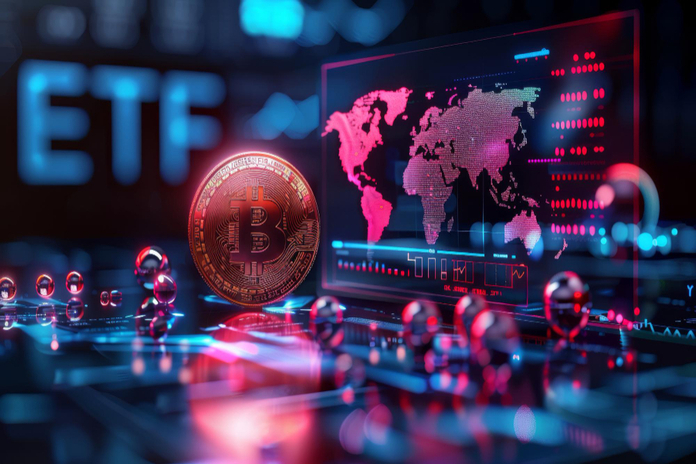Circle CEO Jeremy Allaire Calls for Bipartisan Crypto Policy
This post was originally published on this site

In a recent interview, Circle CEO Jeremy Allaire emphasized the importance of establishing a bipartisan crypto policy in the United States. Allaire’s remarks come at a critical time when the U.S. faces increasing pressure to lead in the rapidly evolving global cryptocurrency industry. He believes that while crypto has seen some bipartisan support, more decisive action is needed to ensure that the U.S. remains at the forefront of this transformative technology.
Crypto as a Bipartisan Issue
During his interview on CNBC, Allaire pointed out that bipartisan crypto policy is already beginning to take shape in the U.S. “What’s interesting is that if you look at what happened over the past year, you actually saw a lot of bipartisan work getting done,” Allaire said. He highlighted significant legislative advances in areas like stablecoins and market structure, which indicate that crypto is being treated as a bipartisan issue.
However, Allaire also expressed concerns that the current administration’s policies have hindered the growth of the crypto industry in the U.S. He argued that these policies have driven jobs overseas, stifled innovation, and left crucial decisions to the courts rather than Congress. “They’ve made the cost of building in this space extremely prohibitive,” Allaire said, criticizing the lack of clear and supportive regulation for the industry.
The Need for Leadership in Crypto Regulation
Allaire’s call for a bipartisan crypto policy reflects a broader concern within the industry that the U.S. is losing ground to other regions, particularly Europe, which has moved ahead with comprehensive regulation. “What the industry is looking for is clear statements, from the existing White House, and clear statements from Harris as part of her economic policy agenda,” Allaire noted, suggesting that the current administration has not done enough to support the industry’s growth.
This sentiment is echoed by other industry leaders, including Coinbase’s Chief Legal Officer, Paul Grewal, who recently told CoinDesk that technology should transcend the political divide. The consensus among these leaders is that bipartisan support is crucial for the U.S. to maintain its competitive edge in the global crypto market.
The Political Landscape and Crypto’s Future
Allaire also touched on the broader political landscape, including the role of former President Donald Trump in shaping future crypto policy. While Trump made an appearance at the BTC 2024 conference in Nashville, he has not publicly addressed the issue of cryptocurrency in depth. During a recent interview between Trump and Elon Musk, the topic of crypto went unmentioned, leaving many in the industry uncertain about Trump’s stance.
“What does seem clear is that a lot of the people around him and his advisers have a somewhat sophisticated view on the topic,” Allaire said, acknowledging that while Trump himself might not have a deep understanding of crypto, those around him could influence future policy decisions. There has been speculation within the crypto community that Trump might support bold moves, such as making Bitcoin a reserve currency, but Allaire expressed doubt about the likelihood of such a commitment.
The Path Forward for U.S. Crypto Policy
As the U.S. grapples with its position in the global crypto landscape, Allaire’s call for a bipartisan crypto policy serves as a reminder of the importance of clear and consistent regulatory leadership. Without it, the U.S. risks falling behind other regions that have already established comprehensive frameworks for the industry.
Allaire’s concerns about the current administration’s approach to crypto highlight the need for more proactive and supportive policies that encourage innovation while providing the necessary regulatory oversight. As the industry continues to evolve, the role of policymakers in shaping the future of crypto will be critical in determining whether the U.S. can maintain its leadership in this rapidly growing sector.
In conclusion, the need for a bipartisan crypto policy is more pressing than ever. As Jeremy Allaire and other industry leaders have pointed out, the U.S. must take decisive action to ensure that it remains a key player in the global cryptocurrency market. The coming years will be crucial in shaping the regulatory landscape for crypto, and bipartisan cooperation will be essential in navigating this complex and rapidly changing industry.
Featured Image: Freepik






